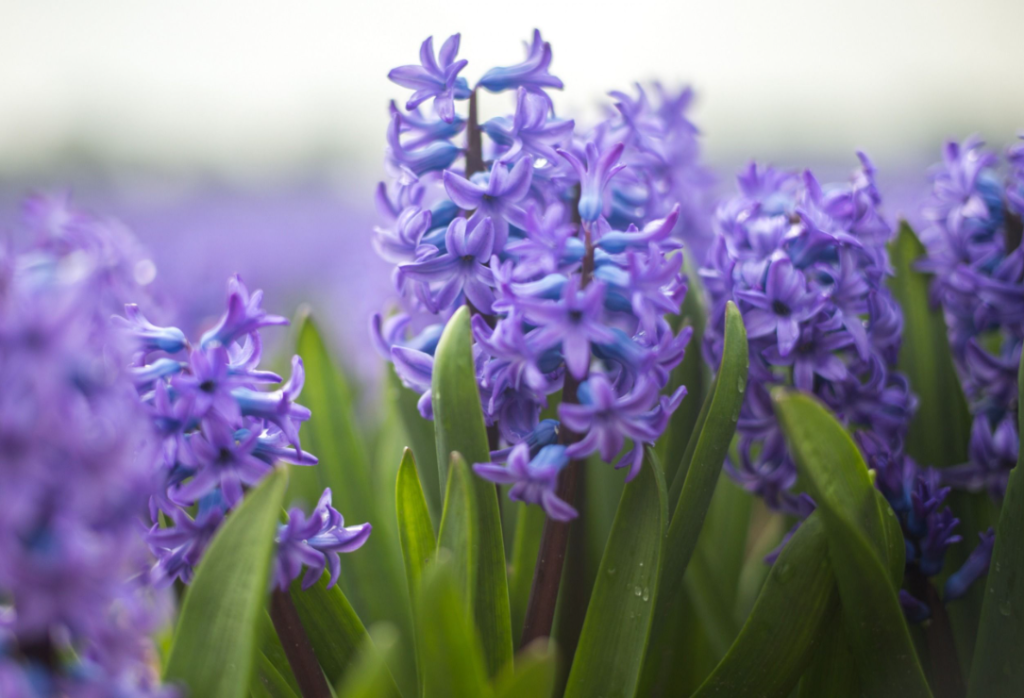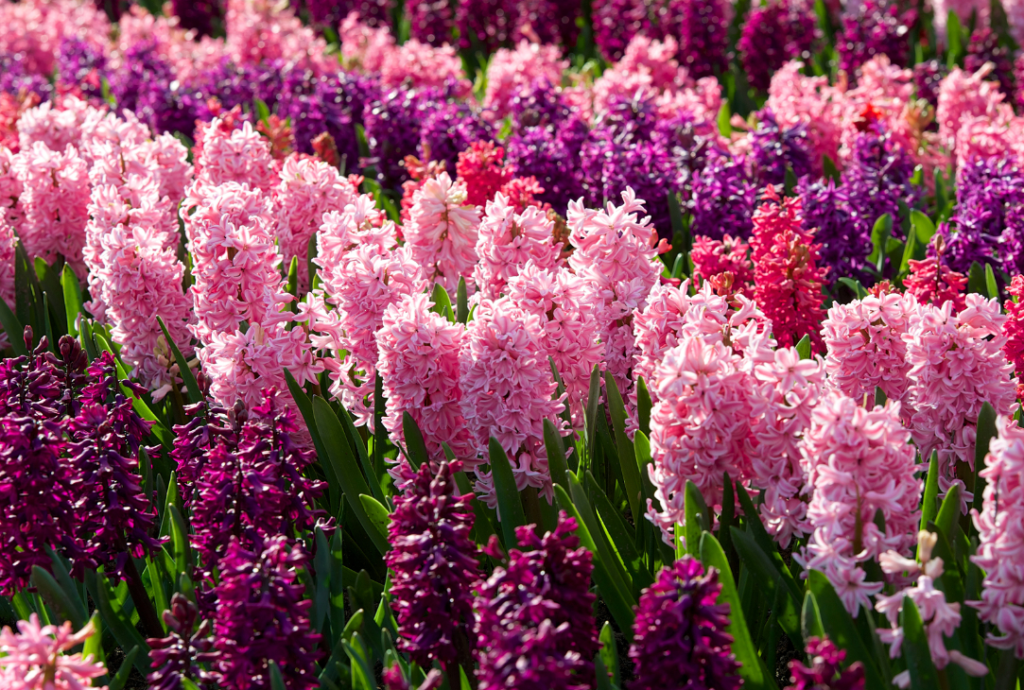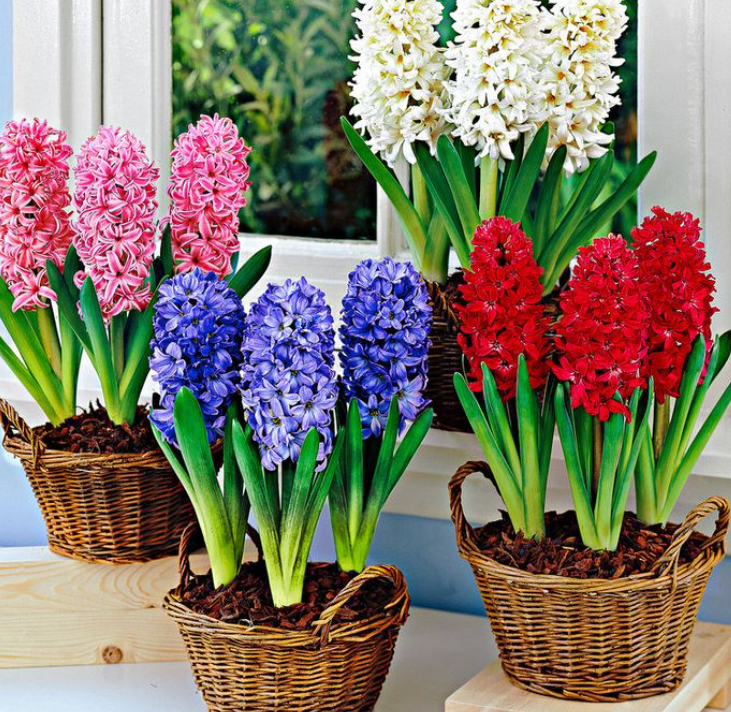Are Hyacinths Poisonous to Cats? Hyacinths are a popular flowering plant that produce beautiful and fragrant blooms in shades of pink, purple, white, and blue. As much as we may enjoy these lovely flowers, it’s important to be aware that hyacinths can be toxic to cats if ingested in large amounts. The bulbs and flowers of the hyacinth plant contain certain chemical compounds like oxalic acid, lycorine, and narcissus alkaloids, which can cause digestive upset, mouth and throat irritation, and even kidney or urinary tract blockages in cats. In this article, we’ll explore the potential risks associated with hyacinth toxicity in cats and provide some tips for keeping your feline friends safe around these and other potentially harmful plants.
Why are Hyacinths Poisonous to Cats?
Hyacinths are poisonous to cats because they contain certain chemical compounds that can be harmful if ingested in large amounts. The bulbs and flowers of the hyacinth plant, for example, contain high levels of oxalic acid, which can cause digestive upset and irritation to the mouth and throat.
When a cat chews on or ingests any part of a hyacinth, the oxalic acid can react with calcium in the body to form calcium oxalate crystals. These crystals can build up in the kidneys, bladder, or urinary tract and cause blockages, which can be very dangerous and even life-threatening if left untreated.

In addition to oxalic acid, hyacinths also contain other toxic compounds such as lycorine and narcissus alkaloids, which can cause a range of symptoms including vomiting, diarrhea, and seizures.
Overall, it’s important to keep hyacinths and other potentially toxic plants out of reach of cats and to seek veterinary care immediately if you suspect your cat has ingested any part of a poisonous plant.
Symptoms
Hyacinths are a common flower in gardens and bouquets. However, they are also poisonous to cats, especially kittens. Common symptoms include;
- excessive drooling,
- vomiting,
- diarrhea,
- and depression.
The hyacinth bulb is the most dangerous part of this plant because it contains high concentrations of toxic alkaloids and calcium oxalate crystals, according to the experts. Even a small amount of the plant can cause serious symptoms, so make sure to keep it out of your cat’s reach at all times!
If your cat eats the plant or bulb, it can experience vomiting and diarrhea. If the vomiting doesn’t clear up within twenty-four hours, take your cat to a veterinarian for treatment.
When you bring your cat to a veterinarian for treatment, inform the vet as much information as possible about when and how your cat ingested the plant. This will help speed up the diagnosis and treatment process.
Treatment
If your cat is suffering from any of these symptoms, it’s important to seek veterinary care as soon as possible. Your veterinarian will administer medications to help your cat’s kidneys and liver work properly.
Fortunately, the majority of cats who are poisoned by hyacinths recover without serious complications. In rare cases, however, hyacinth poisoning can lead to death. To avoid this, keep hyacinths far away from your pet.
Prevention
Hyacinths are beautiful and fragrant, but they can pose a serious threat to your cat’s health. This is because the bulbs, flowers, and leaves of hyacinths are all poisonous to cats.
Thankfully, there are plenty of options to prevent your cat from accidentally eating or inhaling poisonous plants. One option is to simply remove the hyacinths from your yard or home entirely.
Another option is to plant other flowering plants that are safe for your kitty. Tulips, roses and crocuses are both great choices.
To help prevent your cat from getting to hyacinths, try placing citrus peels around the tops of your potted hyacinths or scattering coffee grounds within them. Pine needles are also an excellent option to deter your cat from digging up your hyacinths.
Precautions

The beautiful blooms of hyacinths are a wonderful sight in the spring garden. But, it’s important to keep them away from cats for good reason.
Hyacinths are members of the Liliaceae family and contain oxalic acid, which can be harmful if ingested by a cat. It also causes oral irritation and gastrointestinal problems, including vomiting and diarrhea.
Precautions regarding whether hyacinths are poisonous to cats:
- Hyacinths contain certain chemical compounds that can be toxic to cats if ingested in large amounts.
- The bulbs and flowers of the hyacinth plant are particularly toxic to cats, as they contain high levels of oxalic acid, which can cause digestive upset and irritation to the mouth and throat.
- Symptoms of hyacinth poisoning in cats may include vomiting, diarrhea, loss of appetite, lethargy, and difficulty breathing.
- If you suspect that your cat has ingested any part of a hyacinth plant, seek veterinary care immediately.
- To prevent accidental ingestion, keep hyacinth plants out of reach of cats. This may mean placing them on high shelves or keeping them in rooms where your cat doesn’t have access.
- Consider using alternative plants that are safe for cats, such as spider plants or Boston ferns, instead of hyacinths if you’re worried about accidental poisoning.
Are Hyacinths Poisonous to Cats Conclusion
Yes, Hyacinths are toxic to cats. The bulbs of the Hyacinth plant contain a substance called oxalic acid which can cause vomiting, diarrhea, lethargy, and even kidney failure in cats if ingested. It’s important to keep these plants out of your cat’s reach and to contact your veterinarian immediately if you suspect your cat has consumed any part of a Hyacinth plant.
Are Hyacinths Poisonous to Cats FAQ
Is hyacinth pet friendly?
Hyacinths are not pet-friendly as they can be toxic to cats and dogs. The bulbs of the Hyacinth plant contain a substance called oxalic acid which can cause gastrointestinal upset, vomiting, diarrhea, lethargy, and even kidney failure in pets if ingested. Therefore, it’s essential to keep these plants out of your pet’s reach and consider using alternative, non-toxic plants if you have pets in your household. It’s always best to consult with your veterinarian if you’re unsure about a particular plant’s safety for your pets.
What is the most toxic flower to cats?
There are several flowers that can be highly toxic to cats, but lilies are considered to be the most toxic. Even small ingestions of a lily plant can cause severe kidney damage and potentially life-threatening kidney failure in cats. All parts of the lily plant are toxic, including the petals, leaves, stem, and pollen. Other toxic flowers for cats include tulips, daffodils, azaleas, and chrysanthemums. It’s crucial to keep these plants out of your cat’s reach and contact your veterinarian immediately if you suspect your cat has consumed any part of a toxic flower.
How toxic are hyacinths?
Hyacinths are considered toxic to cats, dogs, and horses. The bulbs of the Hyacinth plant contain a substance called oxalic acid, which can cause gastrointestinal upset, vomiting, diarrhea, lethargy, and even kidney failure in pets if ingested. The severity of symptoms depends on the amount of plant material consumed and the size of the pet. Ingestion of large amounts of Hyacinth bulbs can be very dangerous and even life-threatening to pets. Therefore, if you suspect that your pet has consumed any part of a Hyacinth plant or bulb, it’s crucial to contact your veterinarian immediately.









